Translate This Page
Updated 08/01/2022
What causes a Charger to fail?
On 1st February 2017 Kev wrote :
"Morning Allan, Just a quick note to let you know that you were correct about our batteries being shot and to thank you for your advice and help. I've now fitted the new EBL99 with two new Varta batteries and they're charging from mains hook-up perfectly. The new EBL is working fine. I've charged the old batteries using my bench charger and then tested them using a Sealey 12v battery tester and they're both refusing to hold the charge".
When Kev first contacted us, we suggested the reason for the chargers failure would be poor batteries, as that, or an oversize battery bank, is almost always the cause. He initially disagreed with our diagnosis thinking his batteries were good. As you can see from the above, our experience of doing this since 2011 shows.
Note: The maximum permissible battery capacity for Kevin's EBL99 is 180Ah and because the vehicle (starter) battery, which is also charged when on EHU, can charge at up to eight amps the maximum habitation battery capacity should not exceed 100Ah. Two 80 or 90Ah batteries can be used in parallel provided they are identical, the same age (from the same batch if possible) and are not discharged below 50% DOD (Depth Of Discharge), which for most Lead technology batteries can be considered to be 12.1volts.
Modern Alternators are very reliable. Yet Alternator failure in a Motorhome is not uncommon. Just look at the regular posts on the Forums. So if one of the problems is 'alleged' 'weak' mains chargers, why are Alternators also an issue on Motorhomes, yet not on any other vehicle?Surely the only common factor is the extra load of the habitation battery? When habitation batteries tire, the charging load can rise significantly.
If a battery gets to the sorry state where all the cells are pretty much shorted out, the load might be akin to putting an Iron bar across the Alternator terminals or the Mains charger output. Few devices are going to withstand that.It is an extreme example but shows how the load on any charger system is going to rise as the batteries are used.
Much of the Charging systems damage we have seen is consistent with excessive strain from constantly charging a battery that is past it's best or an overlarge battery bank. This applies to ALL leisure charger units we have seen from Arsilicii to Calira and Nordelettronica to Toptron.
The other issue affecting Charger reliability is permanently charging the battery while the vehicle is in long term storage.
John Elsby wrote to us, "I've been reading your advice on Habitation battery bank sizes and in view of the fact that my alternator failed earlier in the year, I’m back to one Habitation battery instead of two. Wish I'd read it before".
Steve wrote : "Not really twigged it till now, but after we had Alternator failure on the Swift, it made me really think. Never in all my 40 years of driving have I suffered Alternator failure on a Car, nor my friends. Yet most of us have had or know someone with Alternator failure on a Motorhome. Why hasn't someone before you made the link between battery bank size and the extra load on the Alternator/Charger, it's just ridiculously obvious when you think about it!!.
If you want your Charger/Power unit to last, please read this page on Battery Technology It gives information on what we think are the best (but still cost effective) batteries that place the lightest load on a a Motorhome/Caravans charging systems.
Battery Bank SizingMost mains chargers support a battery bank 10 times the charger output. For example a late model Schaudt Elektroblock EBL 99 (fitted in more modern luxury Motorhomes World wide than any other charger) has an 18A output so will support a 180Ah battery bank. Because the Elektroblock EBL 99, like most modern units, also charges the Starter battery this has to be allowed for in the calculation.Units like the EBL 29/EBL 220 can charge the Starter battery at up to 6 amps, that is 30% of the chargers 18amp output and will clearly have an impact on charging the Habitation area battery.
This Calira 20amp unit, below, has text on the top cover showing its 'Battery Capacity' as 70 - 200Ah, supporting the 10 times rule :
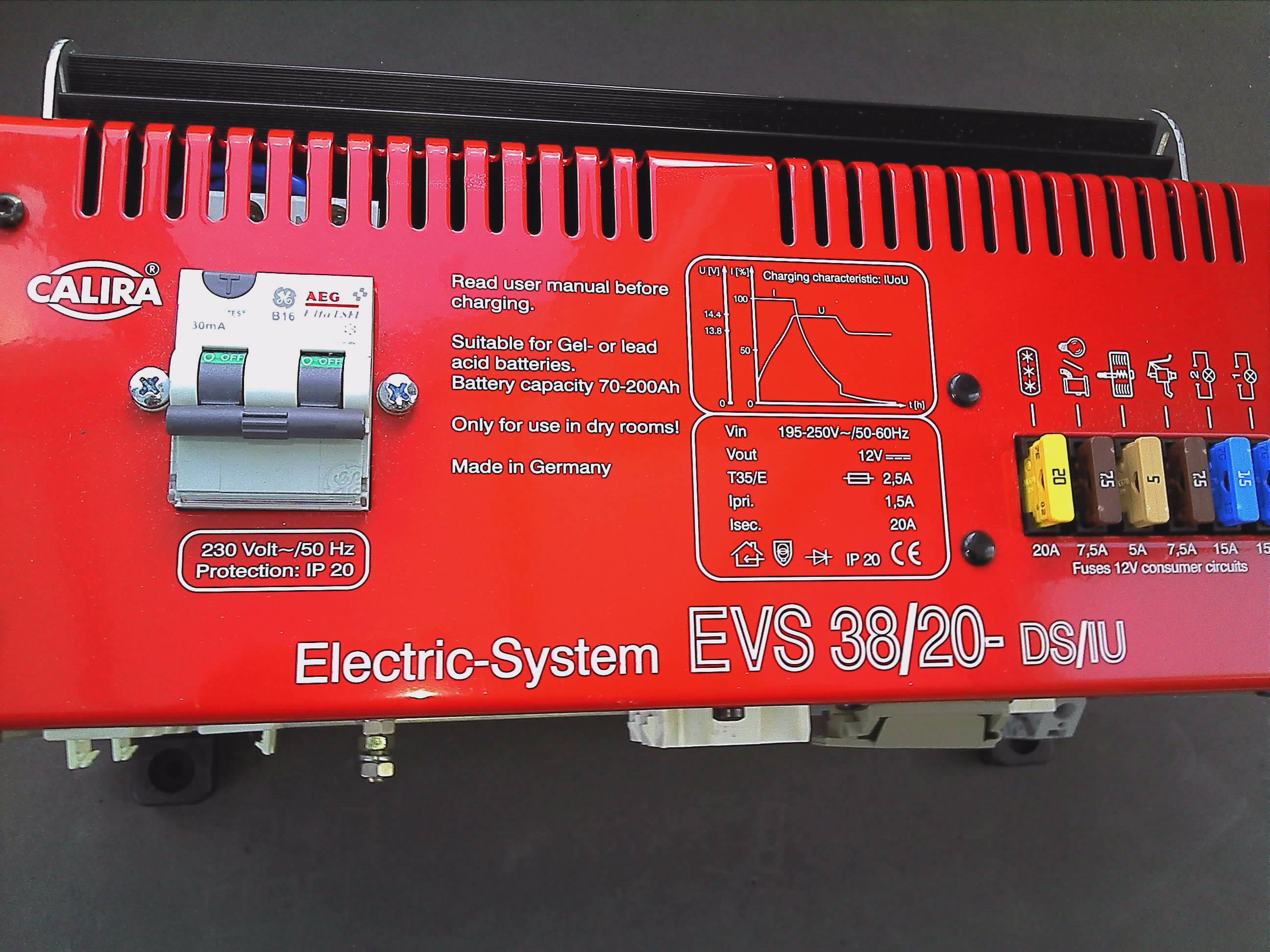 Large Battery banks are not unusual, but they place a big strain on the mains charger and Alternator. Additionally the batteries may not reach full charge, leading to premature deterioration.
Large Battery banks are not unusual, but they place a big strain on the mains charger and Alternator. Additionally the batteries may not reach full charge, leading to premature deterioration.
See the web page 'How does a charger work', for a more detailed explanation of how adding a second battery can lead to the charge time increasing 10 fold, not the 2 fold increase most expect
The photo below is of an 18amp charger that was being asked to charge a 6 year old 240Ah Gel battery, paired with 2 more recent Numax 110Ah 'wet' batteries. All three batteries connected together in massive 460Ah battery bank.
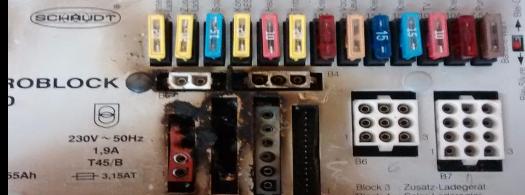
You can see from photo how happy the unit was about that?
GET THE BEST FROM YOUR BATTERY AND MAXIMISE THE CHARGERS LIFE.The way you Use/Care for your battery can extend it's useful life enormously, and therefore the life of the charger/power unit. There are numerous 'battery Discharge' charts being banded about, but few seem to take account of how a batteries technology affects it's voltage. Most charts on the web are well out of date for modern batteries, leading people to accidentally run batteries down lower than ideal, with resultant degradation. This then overloads the charger.
We publish below a recent chart from Yuasa that covers the differing battery voltages for three common battery technologies.Note the big difference in resting voltages between VRLA (Gel, AGM) batteries, and 'old fashioned' conventional batteries in the chart published below.
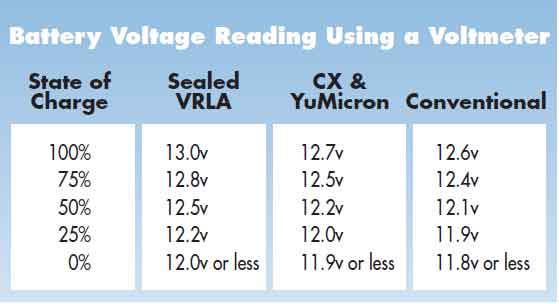

If you have a Gel/VRLA battery, like the legendary Exide G80, we suggest you regard 12.5v as the lowest at which you discharge it for the best compromise between life and usability? You can discharge it more deeply but the life drops from around 1,200 cycles at 25% Depth Of Discharge (DOD) to about 400 cycles at 80% DOD.
Further evidence to support this can be seen in the chart below from Victron. It shows how the number of cycles for their Gel Long Life (Green column) drops from 4,500 cycles at 30% discharge to just 1,500 at 80% discharge, that is two thirds lost life, a massive 3,000 cycles, if you Deep Discharge them.
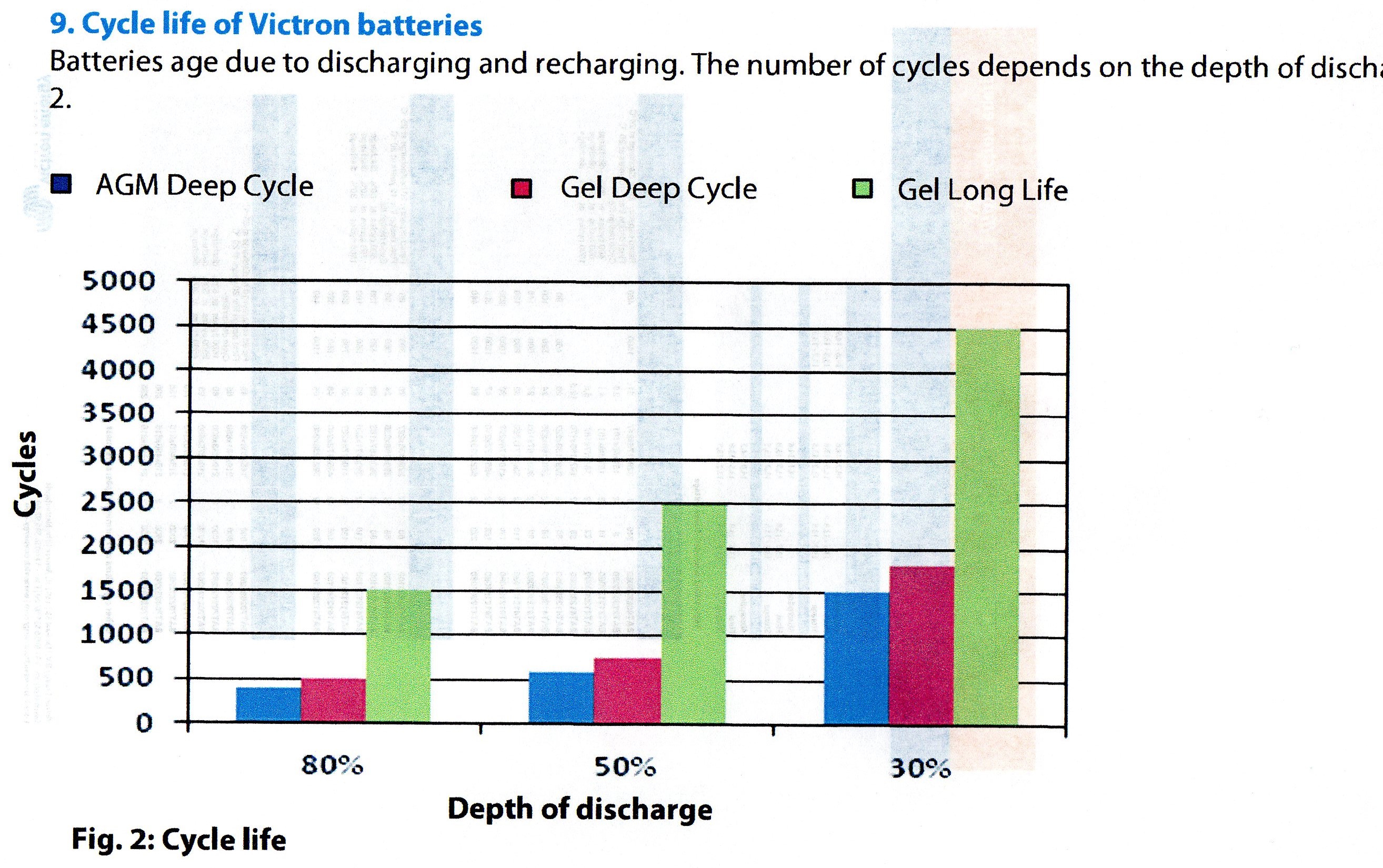

If you look at the 'lesser' Gel Deep Cycle battery column (Burgundy colour), when 30% discharged they have nearly 1,800 cycles. At 50% discharge, 750 cycles will be available and ultra deep discharged down to 80% DOD just 500 cycle life is available. All three battery types shown in the graph lose life in roughly the same proportion. The same ratio applies to Wet Acid batteries. So even Specialist Deep Discharge batteries will suffer up to 2/3rds lost life if you actually do discharge them deeply.
They will deep discharge but the penalty in lost life is significant.
Remember as well, that in addition to the long term battery degradation, the charging system has got to put that power back into the battery. The deeper you discharge a battery the harder a charger will work, and for longer, to put that charge back. That applies to both the Alternator and the Mains charger.
The Varta LFD/Bosch L ranges that we favour have characteristics closer to VRLA, a fully charged resting voltage close to 13v, so we suggest this is the column you use to work out the depth of discharge. On these, 12.4v DOD is the recommended minimum for the best compromise on life versus use.
Whatever the cause or your issue, we repair most faulty Battery Chargers. We specialise in the repair and sales of Nordelettronica, Arsilicii, Sargent and Schaudt Elektroblock Power supply units like the EBL 99.
For information on what we think are the best Motorhome Habitation and Starter batteries, see HERE.
Generators
We are seeing the occasional damaged charger caused by Generators with a poorly regulated output.For sensitive Electronics fitted in a modern Motorhome it should be a Pure Sine Wave or Invertor Generator. Many Generators aimed at Building site operation will destroy Electronic devices.
Below is a battery that requires regulary topping up, in a very dry state, just on 2 years old and completely destroyed.
So was the Alternator and 230v mains charger :-
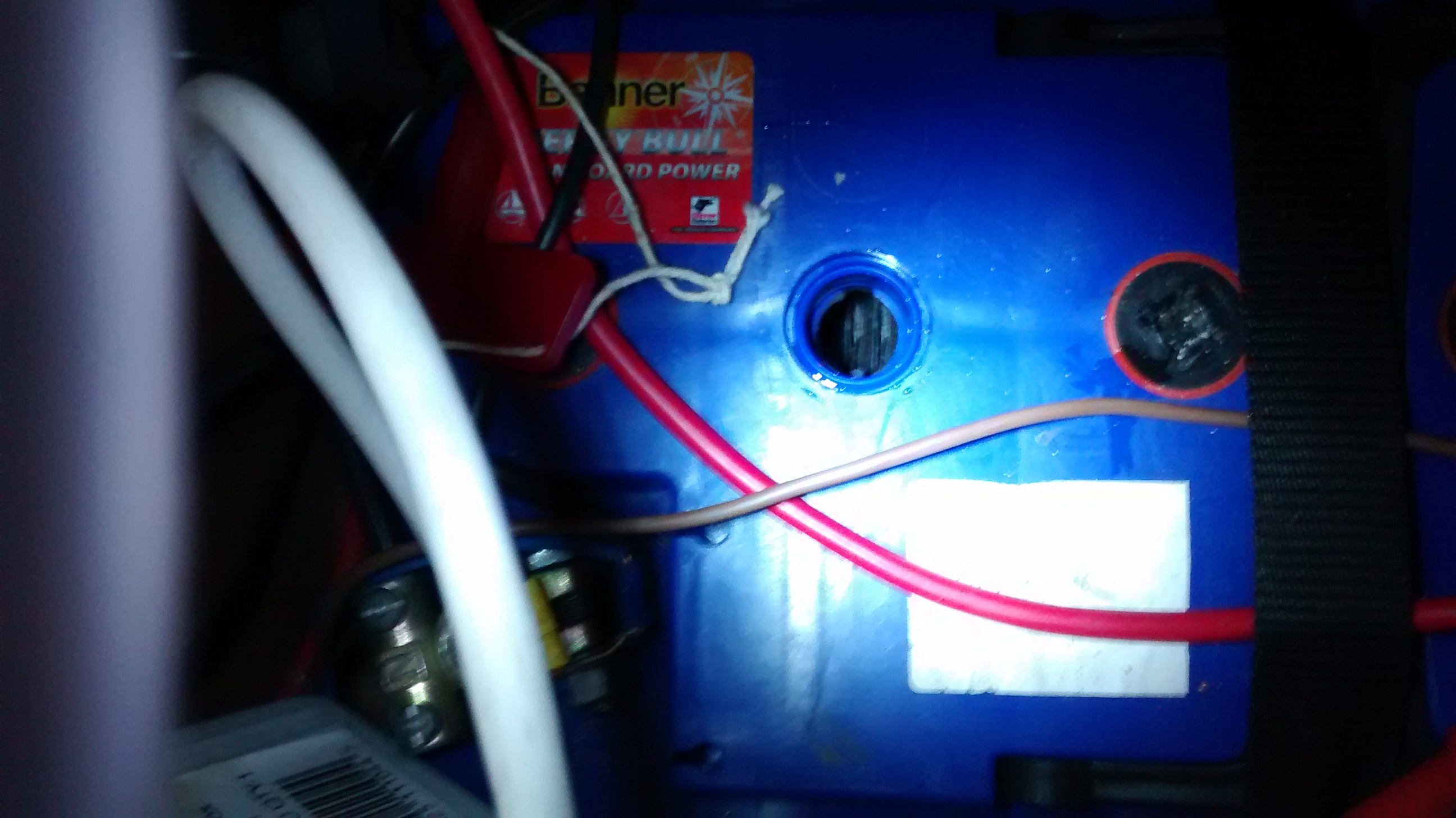
If you have one of these batteries, they are not Maintenance free as some retailers claim.
They use a lot of fluid in normal use.